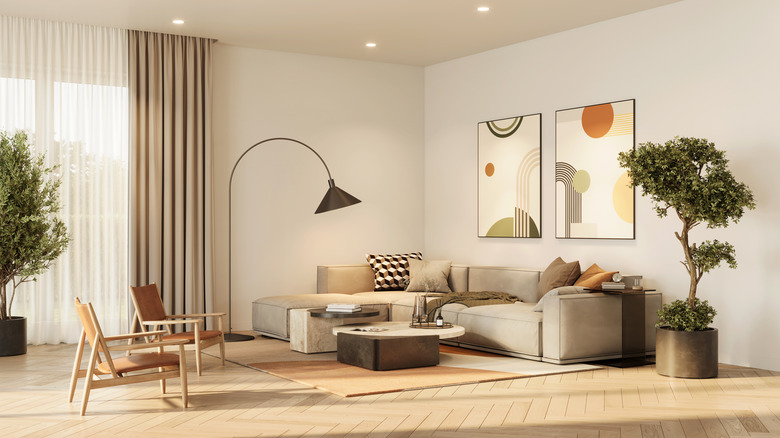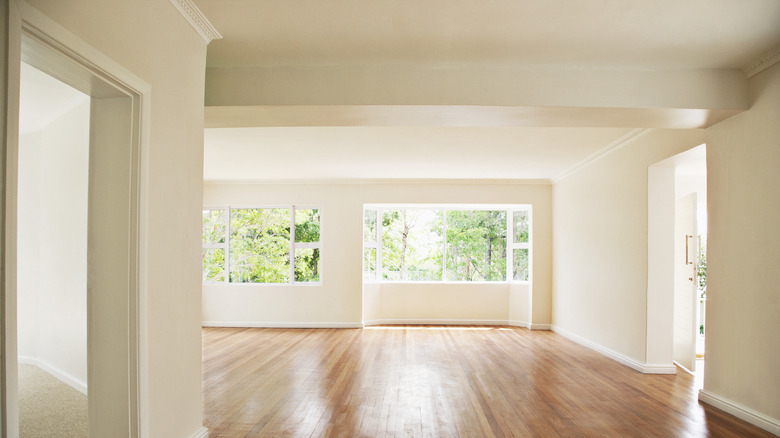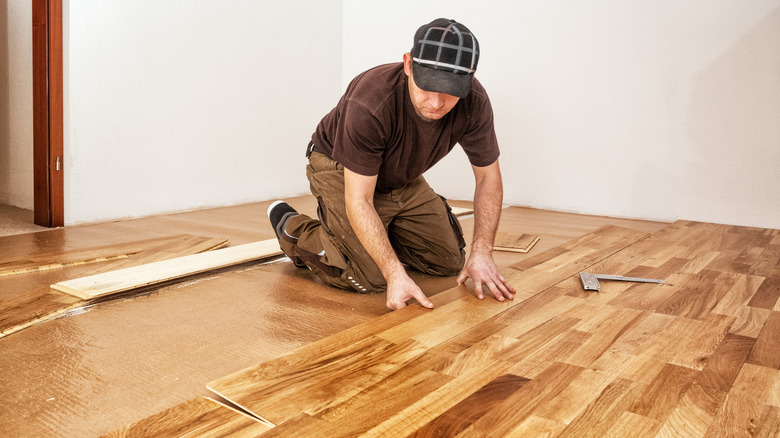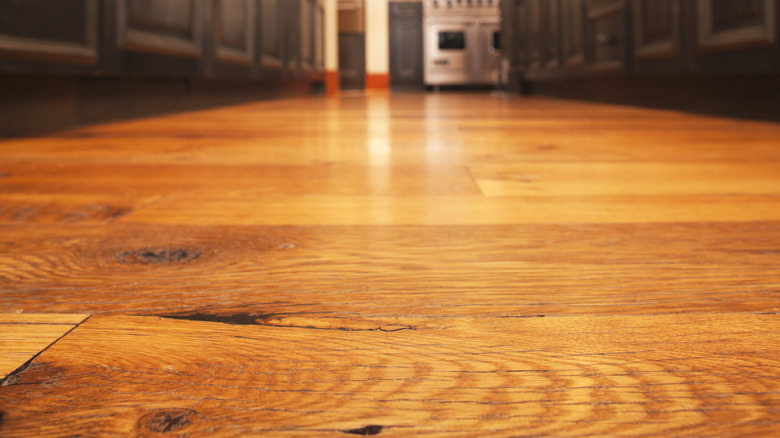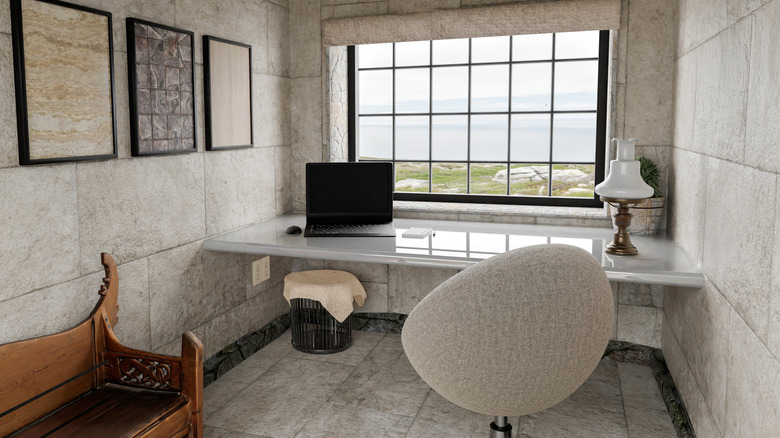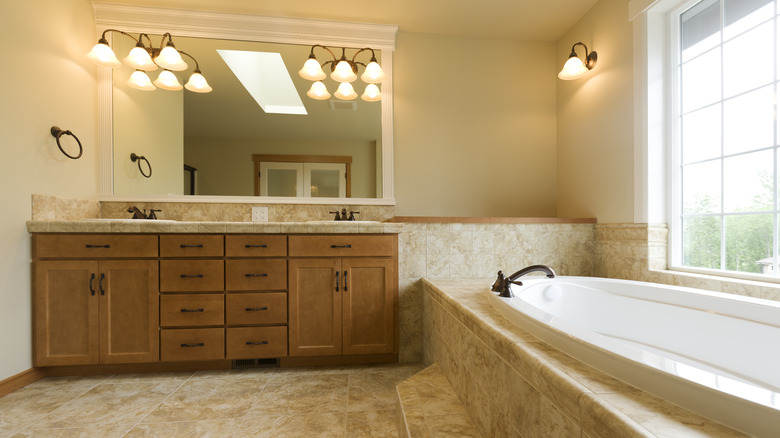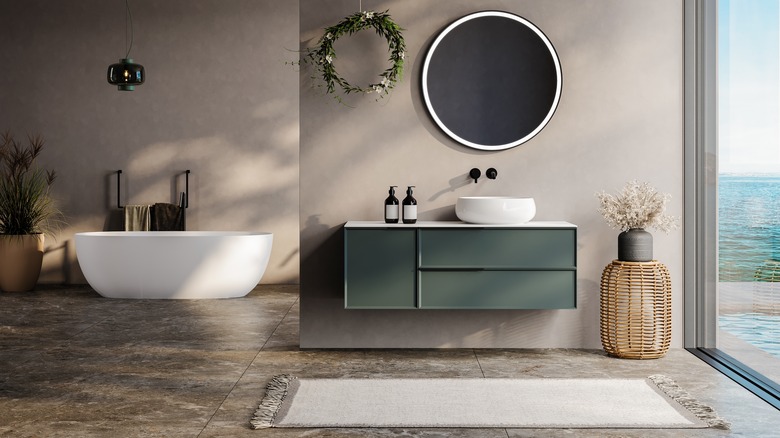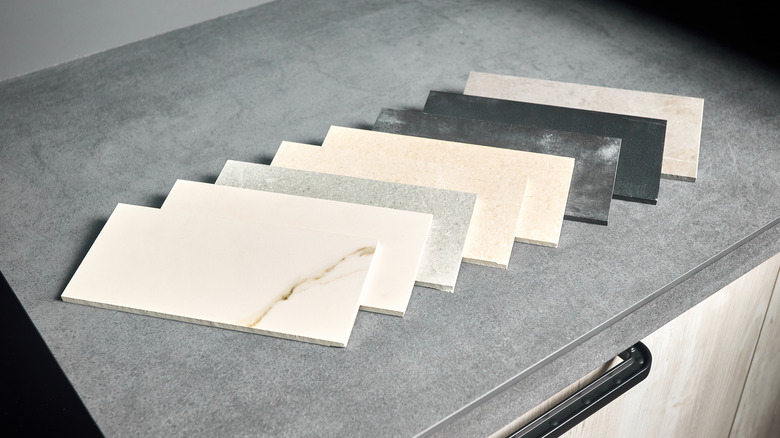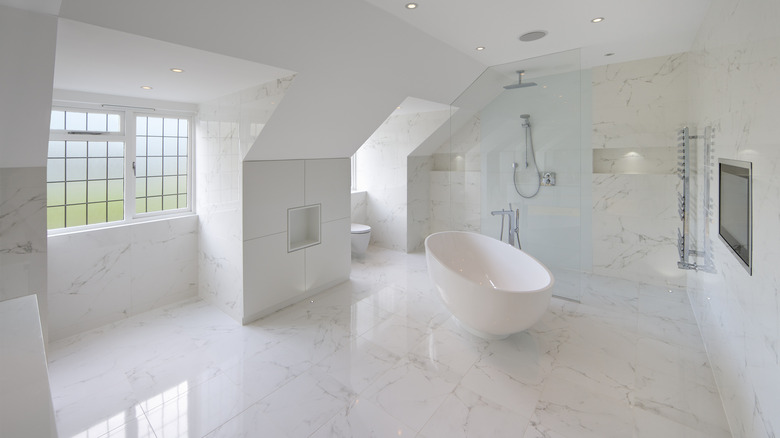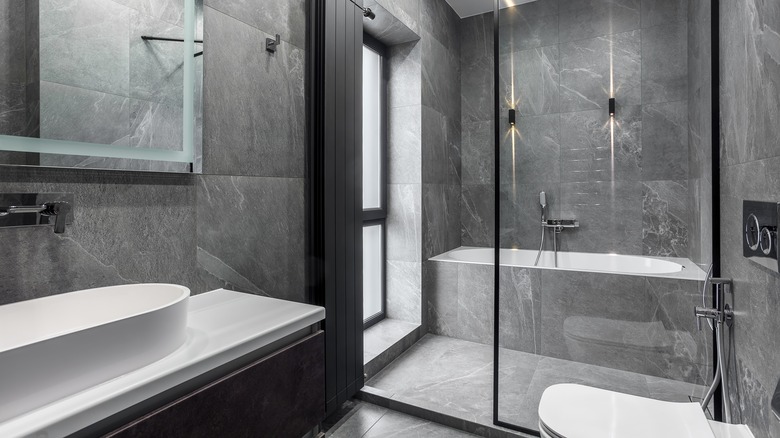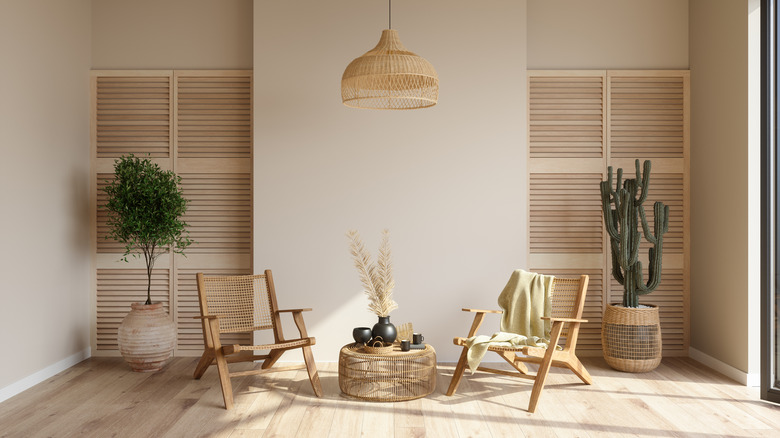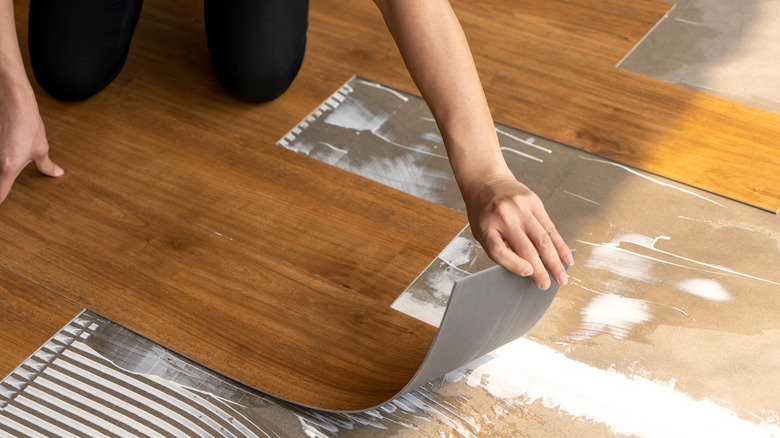11 Flooring Options That Can Help Increase Your Home's Resale Value
Choosing the right flooring plays a major role in shaping your home's look and feel, as well as how it functions day to day. It's one of those things that grabs attention the moment someone walks through your door. Good flooring can tie your whole interior design together, influence how sound travels in your space, and even dictate how much effort you'll be putting into cleaning. But there's more to it. Think about when it might be time to sell your home. That's when the type of flooring you've chosen steps into the spotlight. Quality flooring is a major plus for potential buyers. It signals that the house is well-cared for and can set your property apart in the bustling real estate market. Investing in the right flooring could mean a smoother sale and possibly a better price for your home.
So, whether you're all about the timeless charm of hardwood, the resilience and water resistance of tiles, or the eco-friendly vibe of bamboo, each flooring option brings something special to the table. Besides their look, you'll want to weigh things like how tough they are against scratches, spills, and the hustle and bustle of daily life. In the end, the flooring you pick not only has to match your style but also has to stand up to your lifestyle, all while keeping an eye on the future value of your home. It's about finding that perfect blend of practicality and style that makes your home truly yours and appealing to the next owner down the line.
Hardwood floors are highly sought after for their durability and timelessness
Hardwood floors bring a lot more to your home than just their good looks. They're built to stand up to the hustle and bustle of daily life, giving your space a timeless appeal. Talking about the investment side of things, yes, you'll be putting down more cash at the start—think starting prices around $3 per square foot going up to $10—but you're investing in your home's future. Homebuyers often have their eyes peeled for hardwood floors, which means when it's time to sell, your home might just get a bit more attention (and a higher price).
A 2022 study by the National Association of Realtors threw up some pretty interesting numbers. Turns out, giving your hardwood floors a facelift can pay off big time, with a whopping 147% cost recovery. And if you decide to go all out and put in new wood floors, you're still looking at a neat 118% cost recovery thanks to the bump in resale value compared to what you spent on the project. Even better is the fact that these floors are tough, allowing for a refresh with sanding and refinishing rather than needing a total replacement, saving you money as time goes on. When you start looking into hardwood floors, you'll see there's a whole world of options. From cozy classics like oak and maple to the exotic vibes of Brazilian walnut, there's something to fit every taste and design theme.
Engineered hardwood provides the beauty of hardwood with added stability
Engineered hardwood floors are really shaking things up in the world of home design, offering a clever and durable choice that goes toe-to-toe with the timeless allure of traditional hardwood. These floors are all about the layers, featuring a snazzy veneer of real hardwood sitting pretty on top of sturdy plywood or high-density fiberboard. This layered setup is the secret sauce behind their ability to stand strong against the ups and downs of moisture and temperature—a total game-changer for spots in your home that are prone to a bit of dampness or are built on concrete slabs.
When you start thinking about costs, engineered hardwood is kinder to your budget than the classic solid wood floors. With prices kicking off around $2.50 per square foot, you're getting durability and quality without emptying your pockets. And here's the kicker: if well taken care of, this hardwood can stay in good condition for up to 30 years. And depending on the thickness of that top wood layer, you can sand down and refinish these floors as they age. This means they not only adapt as your home evolves but also keep looking fresh over the years, boosting your home's value in the long run. These floors come in a variety of finishes and types of wood, so you're bound to find something that perfectly matches your home's style.
Reclaimed wood flooring adds character and history to your home
Imagine floors that have lived previous lives as parts of old barns, factories, warehouses, or even ships. That's character you can't find just anywhere; only reclaimed wood offers this touch. Sure, it might cost a bit more than your regular wood flooring, starting at around $10 per square foot. But what you're paying for isn't just wood; it's the history and the labor of love that goes into salvaging, restoring, and preparing it for its new role in your home. While it's tricky to pin down an exact ROI for reclaimed wood, consider the broader picture: this isn't just any wood flooring. It's a piece of the environment recycled and brought into your living space. It brings a unique charm with its weathered look, nail holes, and saw marks—each plank has its own backstory. Plus, it's a nod to eco-friendliness that resonates with many, especially those keen on sustainability.
But there's more to it than looks and green credentials. Reclaimed wood tends to be denser and more durable than newer wood because it's had time to harden off in its first life. This makes it well-suited to today's homes, ready to take on the hustle and bustle of modern living while injecting warmth and rustic vibes. In essence, choosing reclaimed wood flooring means you're making a statement about value—aesthetic, environmental, and historical.
Limestone flooring brings a slice of the earth's historical layers into your home
Limestone flooring brings a piece of the earth's history right into your living room. Imagine a natural stone floor that's been in the making for millions of years, formed from all sorts of natural bits like coral and shells. That's limestone for you. It's a rock with a backstory, offering those soft, earthy tones and textures that can make any room feel a bit more like home. Now, let's talk turkey. Limestone isn't a budget-breaker but it's not dirt cheap either. Prices can range from $3 to $10 per square foot. As for getting your money's worth, you're looking at a return on investment that can swing between 55% and a solid 70%. Not too shabby, especially when you consider the unique vibe it brings to the table.
Limestone's got versatility on its side too. Whether you like your floors polished, honed, or brushed, limestone can fit your style. And because no two tiles are the same, your floor is guaranteed to be one-of-a-kind. But here's the heads up: limestone is a bit like that high-maintenance friend. It's gorgeous, but it needs a bit of looking after, including a good seal to keep stains and wear at bay. As for durability? It's got that in spades, ready to take on busy foot traffic, though it's a tad softer than some of its rock cousins, like granite. So, if you're aiming for that blend of natural beauty, uniqueness, and a dash of sophistication, limestone could be your floor's best friend. Just remember, a little TLC goes a long way.
Travertine offers a timeless and classic look
Travertine flooring comes from limestone that's been hanging out in mineral springs, getting all bubbly and interesting. As it forms, it traps little gas bubbles, which gives travertine its unique pitted surface. You can choose to fill these pits for a sleek look or leave them be for some extra texture. Now, about the cost. Travertine is on the fancy side, with prices usually kicking off at around $25 per square foot. However, this high initial cost gives you an ROI of 55% to 70%.
But it's not just about looking good; travertine is tough. With the right care, this flooring can stick around for decades, making it a solid pick for both homes and commercial spaces. But there's more! Travertine has a cool-to-the-touch quality that makes it a dream in hot climates. Plus, its porous nature means it's less slippery, which is a big win for safety in wet areas like bathrooms and kitchens. So, laying down travertine might be a bit of an upfront spend, but the payoff is huge. It amps up your space with its luxurious vibe and long-lasting durability. And when it comes to bumping up your home's value, this flooring type has got your back. Its natural beauty and robustness make it a smart investment for anyone looking to add a splash of elegance to their digs.
Terrazzo floors are an eco-friendly choice
Terrazzo flooring is like the confetti of the flooring world, sprinkling a bit of Italian flair right into your space. This eco-friendly choice mixes up marble, quartz, granite, or glass chips with a binder to create something truly special. After it sets, it's polished up to let the bits and pieces shine through, giving you a floor that's not just durable but downright dazzling. Now, about the costs. Terrazzo does lean towards the pricier side, starting at around $22 per square foot. But get this: its return on investment swings between a cool 55% to 70%. Sure, the upfront cost might make you blink, but the long game is where terrazzo shines. Its tough-as-nails nature and low-maintenance vibe mean you won't be redoing your floors anytime soon.
One of the best things about terrazzo? It's practically superhero-level durable, and it's a breeze to keep looking fabulous. Seal it up, and you're set against water, stains, and scratches, making it perfect for those places in your home that see a lot of action. Plus, with no grout lines to fret over, a quick wipe is all it takes to bring back that sparkle. All in all, that unique blend of beauty and practicality makes terrazzo floors a magnet for potential buyers looking for something out of the ordinary.
Porcelain tiles are known for their durability and water resistance
Porcelain tiles are a game-changer for anyone chasing that perfect blend of durability and style in their home. Imagine having floors that stand up to almost anything life throws at them—spills, splashes, you name it—and still look as classy as ever. That's porcelain for you. These tiles get their superpowers from being fired at super high temperatures, creating a surface that's tougher and less porous than a standard ceramic tile. Thinking about cost? Porcelain does come with a higher price tag upfront, starting around $6 per square foot. But here's the thing: they're kind of a bargain in the long run. With their ability to look good year after year, you're looking at a solid 55% return on investment. Not too bad, right? Plus, their sleek look and tough-as-nails character can crank up your home's appeal if you ever decide to sell.
And the design possibilities? Endless. Thanks to some nifty printing technology, porcelain tiles can mimic just about any material out there—stone, wood, even fabric. This gives you the freedom to nail any look you're going for, from ultra-modern to comfortably rustic. And they manage this without the high maintenance or cost usually linked with those natural materials. So, if you're all about making a smart investment that pays off in durability, style, and home value, porcelain tiles are worth a look.
Marble offers a luxurious look
Marble flooring takes your home's style game up a notch. When you choose marble, you're not just picking a floor; you're selecting a piece of the earth's history. Each slab, with its unique veins and swirls, is like no other. That's the beauty of marble—it's as unique as a fingerprint, making your space truly special. Alright, diving into the nitty-gritty, marble does ask for a bit more from your wallet, with the price tag starting around $18 per square foot.
But here's the scoop: it's not just about spending money; it's about investing in your home. Marble floors can significantly boost your home's resale value. Think about it—almost a 50% return on investment. Not too shabby, especially when you consider the luxe vibe marble floors bring to the table. But there's more to marble than just good looks. It's got a cool touch that's a bonus in warmer weather, keeping your living space comfortably chill. And let's not forget how it can play with light, making rooms feel brighter and more open. So, when you're weighing up the cost, remember what marble brings to your home: unmatched elegance, a cool retreat during summer, and a potential boost in your home's value.
Granite adds a touch of luxury
Granite floors? They're like having a piece of the great outdoors right under your feet. Just think about it: this stunning natural stone is pulled from the earth, cut, and polished until it shines like new. When considering the money side of things, granite is definitely in the luxury lane, with prices starting at about $18 per square foot. But here's where it gets interesting: the return on investment hovers around 50%. Despite their lower ROI, they're in demand in the real estate market, drawing in folks with their high-end look and the promise of durability.
Speaking of tough, granite is a heavyweight champion in the durability department. It can take a lot of foot traffic without showing wear and tear, resists scratches and stains (especially when sealed right), and laughs in the face of moisture. This makes it perfect for bustling kitchens and bathrooms. Sure, laying down granite floors might be a bit more of a workout compared to other options, but the payoff is huge: you end up with a stunning, durable surface that could very well outlast us all. So, while granite might ask for more upfront, it's giving back in terms of beauty, durability, and value.
Bamboo flooring is prized for its sustainability, strength, and aesthetic appeal
Bamboo flooring is catching the eyes of homeowners left and right and for good reasons. It's a choice that speaks to both your sense of style and your eco-consciousness. When it comes to cost, bamboo holds its own against many hardwoods, floating around an average price of $2.25 per square foot. The deal with bamboo flooring's return on investment might be a bit hazy, but let's dive into what we do know about its perks. First off, this stuff is tough. Made from bamboo stalks that are harvested, sliced, and pressed together under serious pressure, the end result is flooring that can take a beating and keep looking great. It's up for the challenge of daily life, resisting wear and tear like a champ. Plus, bamboo doesn't flinch at moisture, making it a solid pick for spots where traditional hardwood might throw in the towel.
But here's the real kicker: bamboo grows back super fast, hitting maturity in about five years. This rapid regrowth cycle puts bamboo flooring on the map as a super sustainable option, perfect for anyone looking to make their home a bit greener. And style? Bamboo's got plenty. Whether you're all about the natural look, digging something a bit darker, or eyeing a specific stain, bamboo flooring comes with options that can vibe with any decor.
Luxury vinyl plank (LVP) has gained popularity for its ability to mimic the look of wood or stone at a lower cost
Luxury Vinyl Plank (LVP) flooring is making waves for folks looking to get that upscale hardwood or stone vibe without the hefty price tag. It's like hitting the flooring jackpot: you get the premium look you're after, but your bank account gets to breathe easy. There is limited information available about the ROI but with costs kicking off at an easy-on-the-pocket $1 per square foot, LVP stands out as a savvy choice for both sprucing up your space and keeping your finances in check. This cost-effectiveness, in addition to low maintenance needs, is a big win when you're eyeing your home's resale value. Investing in LVP can seriously pay off, as it boosts your home's market appeal without costing you a fortune upfront.
The construction of LVP is a marvel in itself, layering up durability, style, and resistance to moisture and mold. This makes it perfect for any nook and cranny of your home, especially those areas that see a lot of spills or steam. Easy to maintain with just a quick sweep and mop, and softer underfoot than traditional options, LVP brings comfort and ease without sacrificing style. Installation is a breeze, too, with methods that suit every skill level, whether you're going the DIY route or bringing in the pros.
